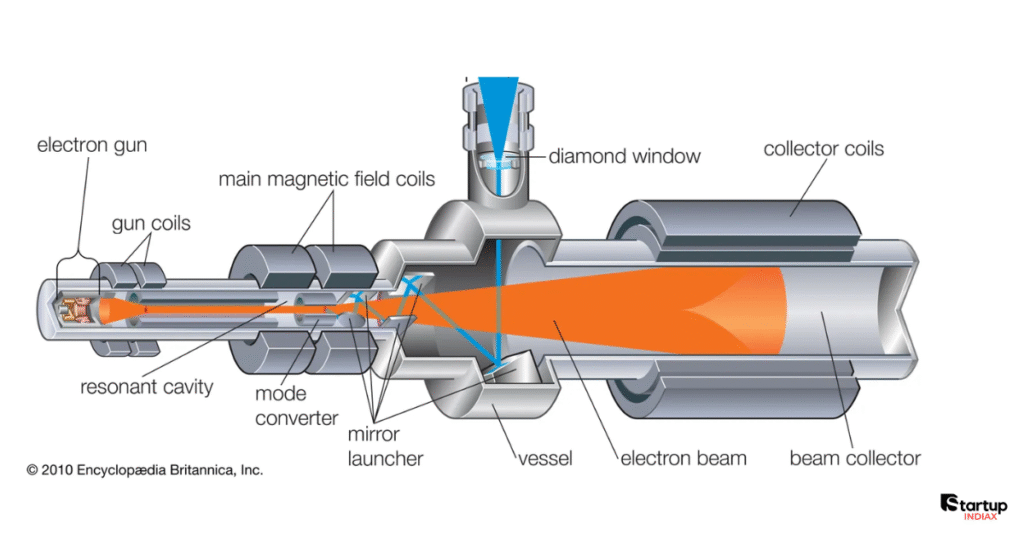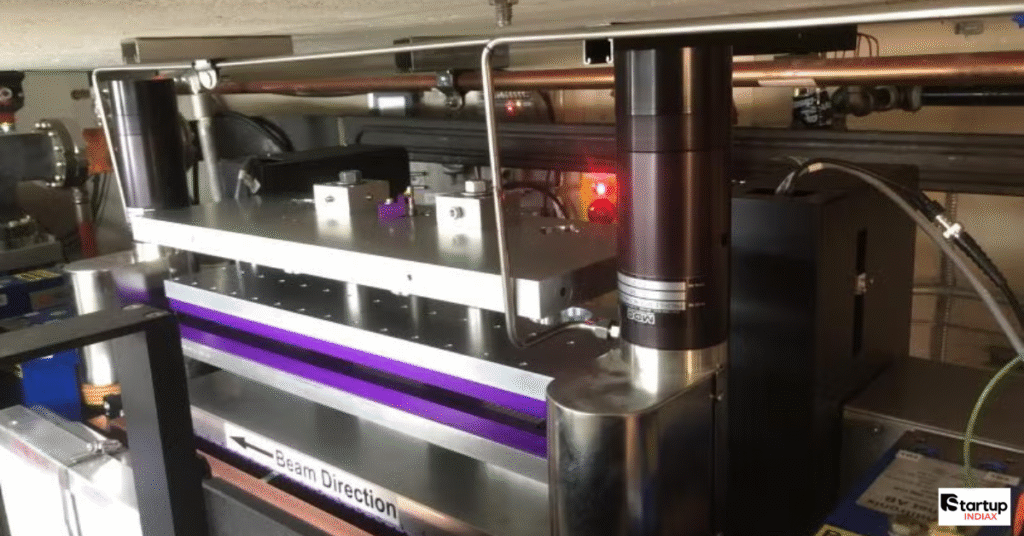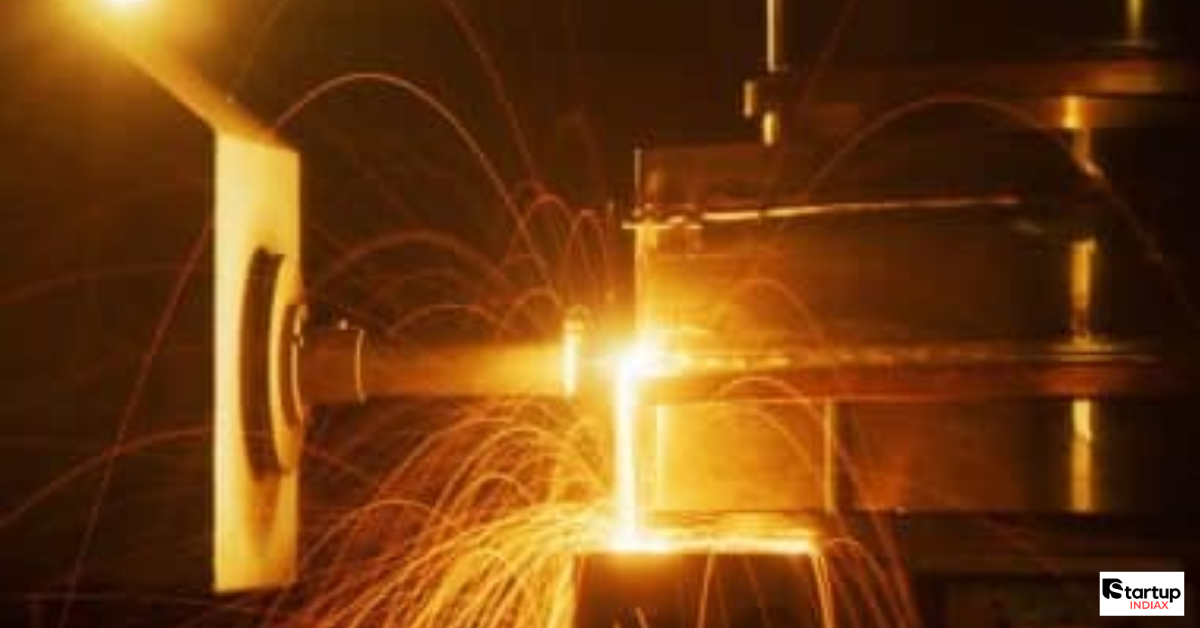U.S. Is Once Again Set to Take the Lead in Global Innovation with a groundbreaking achievement at SLAC National Accelerator Laboratory, where scientists have shattered records by creating the most powerful electron beam ever—five times stronger than any before it. This milestone in Breaking the Record for the Most Powerful Electron Beam opens new frontiers in physics, quantum chemistry, and astrophysics, positioning the U.S. as a leader in cutting-edge scientific discovery. In this article, we’ll dive into what makes this electron beam so special, how it was achieved, and why it’s a game-changer for global innovation. From its potential to revolutionize industries to its impact on startups like Startup INDIAX, this breakthrough is a beacon of progress in the tech world.
Table of Contents
What Makes This Electron Beam So Special?
Let’s start with the basics. An electron beam is a stream of electrons accelerated to high speeds, often used in scientific research to probe the tiniest building blocks of matter. Unlike laser beams, which use photons, electron beams interact with materials in unique ways, making them essential for studying everything from atomic structures to cosmic phenomena. But here’s the catch: creating a super-powerful electron beam without losing its quality has been a massive challenge—until now.
At SLAC National Accelerator Laboratory in Menlo Park, California, researchers have cracked the code. They’ve developed an electron beam with a peak current five times higher than any other, all while keeping it tightly controlled. This isn’t just a cool lab trick; it’s a leap that could redefine how we explore the universe. For companies like Startup INDIAX, which focus on cutting-edge tech, this breakthrough signals exciting opportunities to push boundaries in innovation.
Understanding Electron Beam Technology
Electron beams are like high-speed microscopes for scientists. By accelerating electrons to near-light speeds in a vacuum, researchers can use them to study materials, chemical reactions, and even cosmic events like plasma filaments in stars. The challenge? Packing enough power into these beams without them losing focus or energy. Traditional methods used microwave fields to compress electrons, but this often led to energy loss, degrading the beam’s quality. SLAC’s team, led by Claudio Emma, found a smarter way using laser-based shaping, a technique borrowed from their work on X-ray free-electron lasers.

The Role of SLAC’s Breakthrough
SLAC’s Facility for Advanced Accelerator Experimental Tests (FACET-II) is where the magic happened. The team used a laser heater undulator to precisely modulate the energy of billions of electrons, compressing them into a beam just one micrometer long. This is like squeezing a crowd of people into a phone booth without anyone getting squished! The result? A beam with 100 kiloamps of current and petawatt-level peak power, delivered in pulses lasting just a quadrillionth of a second. This precision and power combo is what makes SLAC’s achievement a global game-changer.
Breaking the Record for the Most Powerful Electron Beam
So, how did SLAC pull off Breaking the Record for the Most Powerful Electron Beam? It wasn’t easy. The team spent months fine-tuning their approach, using a one-kilometer-long accelerator to shape and transport the beam without losing its intensity. Here’s a quick breakdown of how they did it.
How SLAC Achieved This Milestone

The secret sauce is a laser-based shaping technique. Unlike traditional microwave fields, which can cause electrons to lose energy as they emit radiation, lasers offer pinpoint precision. The SLAC team used lasers to modulate the energy of electrons within the first 10 meters of their accelerator. Then, they guided the beam through a kilometer-long machine, using magnets to compress it into a super-tight, high-power pulse. This process, described in Physical Review Letters, required meticulous calibration to ensure the beam stayed stable and powerful.
The Science Behind the 5x Power Boost
The numbers are staggering: SLAC’s beam delivers five times the peak current of any previous electron beam, reaching 10 GeV in energy and lasting just femtoseconds. To put that in perspective, it’s like firing a bullet train’s worth of electrons through a straw in less time than it takes to blink. By using laser-based modulation, the team avoided the energy loss that plagued older methods, achieving both power and precision. This breakthrough isn’t just about raw strength—it’s about control, making the beam a versatile tool for scientists worldwide.
Why This Matters for Global Innovation
The U.S. Is Once Again Set to Take the Lead in Global Innovation because this electron beam opens doors to discoveries that were once out of reach. From studying the quantum world to recreating cosmic phenomena, the applications are endless. Let’s explore why this matters.
Applications in Physics, Chemistry, and Beyond
This electron beam is like a supercharged flashlight for science. In astrophysics, researchers can now recreate plasma filaments found in stars, allowing them to study cosmic phenomena in a lab. In quantum chemistry, the beam’s precision lets scientists observe molecular reactions at unprecedented scales. Even materials science benefits, as the beam can probe the structure of new materials for tech and manufacturing. For startups like Startup INDIAX, this means new opportunities to develop products that leverage these scientific advances, from semiconductors to medical devices.
Boosting U.S. Leadership in Science
This breakthrough cements the U.S. as a leader in particle physics and accelerator technology. While other countries, like France with its Apollon laser, are pushing boundaries, SLAC’s electron beam sets a new standard. Claudio Emma’s invitation to global researchers—“If you need an extreme beam, we have the tool for you”—shows the U.S. is ready to collaborate and lead. This isn’t just about bragging rights; it’s about driving innovation that benefits the world.
The Future of Electron Beam Technology
What’s next for Breaking the Record for the Most Powerful Electron Beam? SLAC’s team isn’t stopping here. They’re already eyeing the next milestone: beams with megaamp currents, ten times more powerful than today’s record. Here’s what the future holds.
What’s Next for SLAC and Global Research?
SLAC plans to push the limits further by using plasma-based compression techniques, which could make beams even shorter and more intense. This could lead to attosecond-scale light pulses—think of it as a camera that captures events a billionth of a billionth of a second long. Such tools would let scientists watch electrons move in real-time, unlocking new insights into chemistry and physics. For the global research community, this means more opportunities to collaborate and innovate.
Challenges and Opportunities Ahead
Of course, there are hurdles. Creating megaamp beams requires new tech to handle the intense energy, and measuring these ultra-short pulses is tricky—traditional tools like scintillating screens can’t handle the beam’s power. But SLAC’s team is optimistic, and their collaborative spirit means solutions are on the horizon. For startups and researchers, this is a chance to jump in and shape the future of science.
Conclusion: The U.S. Sets the Stage for a New Era
The U.S. Is Once Again Set to Take the Lead in Global Innovation with SLAC’s record-breaking electron beam. This isn’t just a win for science—it’s a win for everyone who believes in pushing boundaries. From unlocking the secrets of the universe to inspiring startups like Startup INDIAX, this breakthrough shows what’s possible when innovation meets determination. As SLAC continues to refine this technology, the world is watching, ready to see what discoveries come next. Let’s celebrate this milestone and get excited for the future of global innovation

